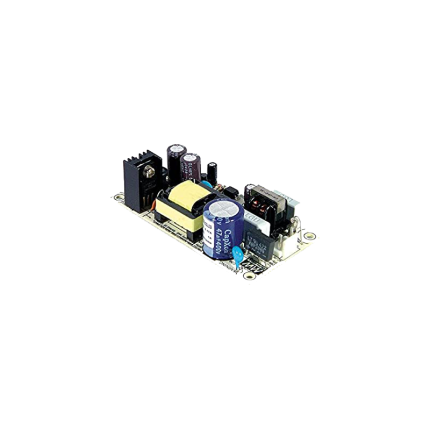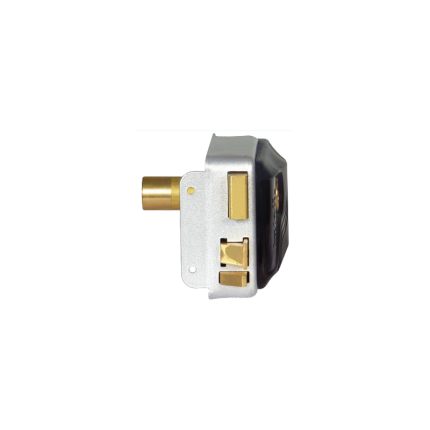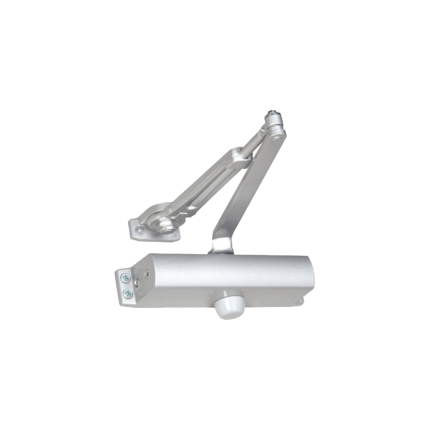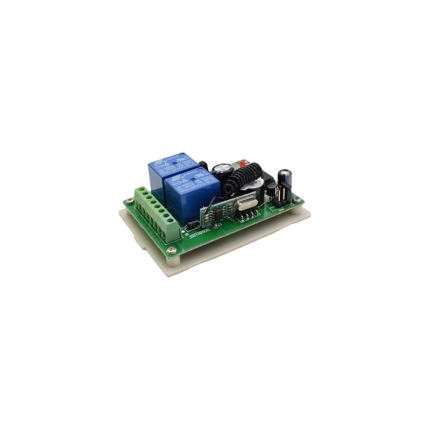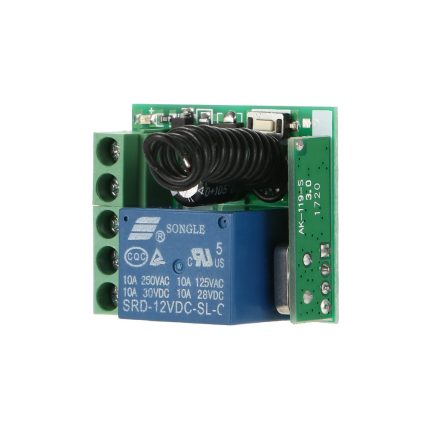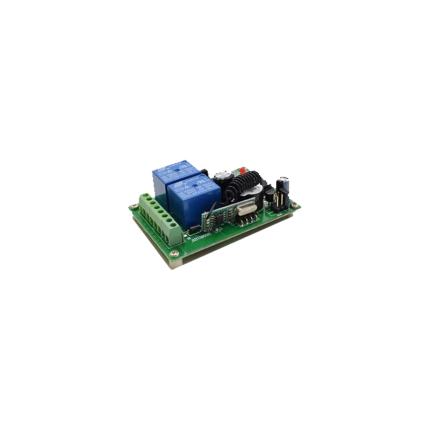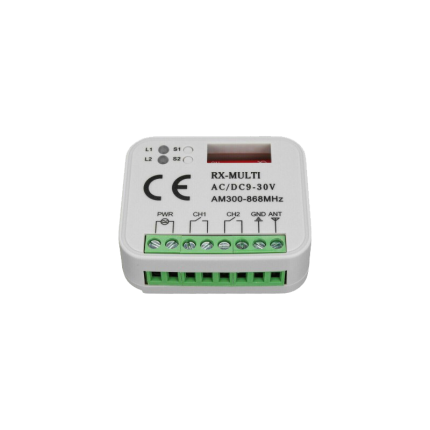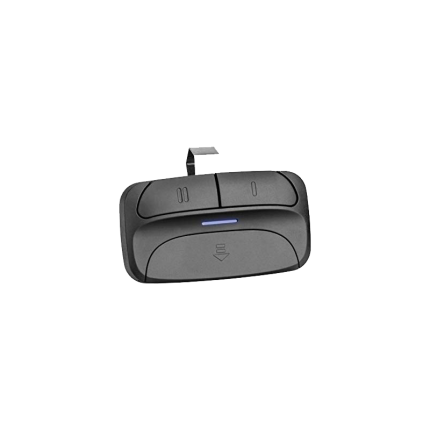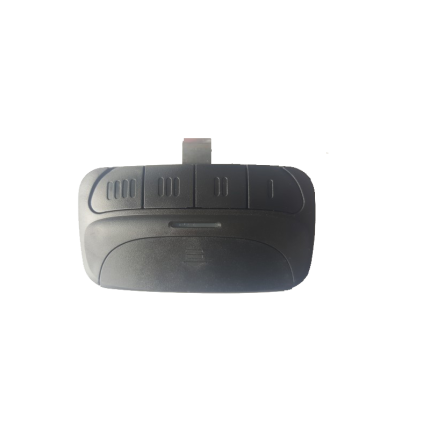Shop
Power converter – AC 24 V to DC 12 V
Ship or pick up from our office.
Power converter - AC 24 V to DC 12 V
A power converter - AC 24 V to DC 12 V is a device that transforms alternating current (AC) at 24 volts into direct current (DC) at 12 volts. These are also commonly referred to as AC/DC power adapters or rectifiers. How it Works ⚙️ The conversion process from AC to DC typically involves several key stages:- Step-Down Transformer: The 24V AC input first goes through a transformer. This component reduces the voltage from 24V AC to a lower AC voltage, although not necessarily directly to 12V DC at this stage. It's about getting to a more manageable voltage level for the subsequent steps.
- Rectification: The reduced AC voltage then enters a rectifier circuit, usually made of diodes. Diodes allow current to flow in only one direction, effectively converting the alternating current (which periodically reverses direction) into a pulsating direct current (which flows in one direction but isn't smooth).
- Half-wave rectifiers block half of the AC waveform.
- Full-wave rectifiers (like a bridge rectifier) use both halves of the AC waveform, resulting in a smoother, more efficient conversion.
- Smoothing (Filtering): The pulsating DC output from the rectifier isn't perfectly steady. It has "ripples" or fluctuations. To smooth this out, capacitors are used. These components store electrical energy during the peaks of the waveform and release it during the dips, creating a much more stable and continuous DC voltage.
- Voltage Regulation: Finally, a voltage regulator circuit ensures that the output voltage remains consistently at the desired 12V DC, regardless of minor fluctuations in the input AC voltage or changes in the load connected to the converter. This also helps protect the connected device from voltage spikes or drops.
- CCTV cameras and surveillance systems: Many security cameras operate on 12V DC, and these converters allow them to be powered from a 24V AC power supply (which is often used in larger installations for longer cable runs due to less voltage drop).
- Low-voltage lighting: Converting 24V AC to 12V DC for certain LED lights or other low-voltage lighting systems.
- Industrial control systems: Some industrial equipment or sensors might use 12V DC power while the facility's power supply is 24V AC.
- Automotive accessories (with specific input needs): While most car systems are 12V DC, there might be niche applications where a 24V AC source needs to be converted.
- Various electronic projects and devices that require a stable 12V DC supply from an AC input.
Pedestrian gate electric lock
Ship or pick up from our office.
Pedestrian gate electric lock
*DC12 V A pedestrian gate electric lock is a device that uses electrical power to secure a walk-through gate, offering enhanced security and convenience compared to traditional manual locks. These locks are commonly used in residential, commercial, and community settings, often integrated with access control systems. Here's a breakdown of what they are and how they work: How they work:- Electronic Control: The locking mechanism is controlled electronically. This allows it to be locked and unlocked automatically, typically triggered by an access control system.
- Access Control Integration: They can be linked to various access control devices, such as:
- Keypads: Users enter a code to unlock the gate.
- Remote controls: Wireless remotes allow for convenient opening from a distance.
- Intercoms: Visitors can communicate with occupants, who can then grant access.
- Key fobs/Card readers: Users can simply tap or swipe a fob/card to unlock.
- Push buttons: For easy exit from the inside.
- Telephone entry systems: Allowing access via phone.
- Types of Electric Locks:
- Electromechanical Locks: These use an electric impulse to trigger a mechanical latch or bolt to engage or disengage. They are known for their strength and durability, suitable for both indoor and outdoor use.
- Electromagnetic Locks (Maglocks): These consist of an electromagnet mounted on the gate frame and a strike plate on the gate itself. When power is applied, the electromagnet creates a strong magnetic force that holds the gate closed. To unlock, the power to the magnet is simply cut. They offer a high holding force and have no moving parts to wear out.
- Enhanced Security: They provide a higher level of security than manual locks, preventing forced entry and ensuring the gate remains closed, especially in high-wind conditions.
- Automatic Locking/Unlocking: Many models automatically lock when the gate closes and unlock when activated, eliminating the need for manual locking.
- Convenience: Remote operation, keypads, and other access control options make entry and exit much more convenient.
- Versatile Applications: Suitable for a variety of pedestrian gate types (wood, steel, vinyl, etc.) and environments, including driveways, pool areas, playgrounds, and commercial perimeters.
- Fail-Secure vs. Fail-Safe:
- Fail-Secure: The lock remains locked when power is lost. This is common for high-security applications where maintaining security during a power outage is crucial.
- Fail-Safe: The lock unlocks when power is lost. This is often used in safety applications where immediate access is needed during emergencies or power failures.
- Battery Backup: Many systems include a battery backup to ensure continued operation during power outages.
- Manual Override: Most electric locks come with a key for manual release, providing a backup in case of power failure or system malfunction.
- Integration: They can be easily integrated with existing gate openers, timers, and other smart home or security systems.
Door closer -DCL062
Ship or pick up from our office.
Door closer -DCL062
Capacity: 75 Kg The "DCL062" appears to be a model number for a door closer manufactured by Royal Electronics Technology Center Co. A door closer is a mechanical device that automatically closes a door after it has been opened. Its primary functions include:- Controlled Closing: Regulates the speed and force of the door's closing action, preventing slamming and potential damage.
- Enhanced Security: Ensures doors are properly closed and latched, improving security by preventing unauthorized entry.
- Fire Safety: Crucial for fire doors, as it ensures the door closes completely to prevent the spread of fire and smoke.
- Accessibility: Some models are designed to meet ADA requirements for opening force and closing speed.
- Energy Efficiency: Helps reduce drafts and air leakage by ensuring doors close properly.
- Adjustable Power Size: Allows for setting the closing force based on door weight and width.
- Adjustable Sweep/Speed and Latching: Controls how quickly the door closes and how forcefully it latches.
- Backcheck: Provides resistance to prevent the door from opening too quickly or violently.
- Mounting Options: Can be installed in various ways (regular arm, parallel arm, top jamb, concealed, floor spring).
- Certifications: Often tested and certified to standards like ANSI/BHMA, BS EN, or UL for performance and fire safety.
Radio receiver RG433-24V2C
Ship or pick up from our office.
Radio receiver RG433-24V2C
* DC 24 V * 2 Channels * 433 MHz The RG433-24V2C is a 433 MHz radio receiver primarily used in automated gate systems to control the opening and closing of gates via a remote control. It acts as a crucial component for convenient and secure remote access. Key Features & Specifications 🔑- Frequency: Operates at 433 MHz, a common frequency for remote control applications.
- Channels: The "2C" in its designation suggests it has 2 channels, meaning it can control two different functions or devices.
- Voltage: It typically operates on a DC 24V power supply.
- Application: Primarily designed for gate opener remote control systems.
- Type: It can be an external receiver, often used as a backup or for added functionality in gate automation setups.
- Manufacturer: It's manufactured by Royal Electronics Technology Center Co. (RETCC).
Radio receiver RG433-24V1C
Ship or pick up from our office.
Radio receiver RG433-24V1C
* DC 24 V * 1 Channel * 433 MHz The Radio receiver RG433-24V1C is an electronic device primarily used in automated gate systems. It receives radio signals from a remote control, enabling it to open and close an automatic gate. 🚧 Key Features and Specifications- Frequency: It operates at 433 MHz, a common frequency for remote control applications.
- Voltage: It requires a DC 24V power supply. The "1C" in its name likely refers to its single channel capability, meaning it controls one function (e.g., opening/closing a single gate).
- Function: Its core function is to receive signals, decode commands, and then control the connected gate opener.
- Type: These receivers can be either internal (built into the gate opener unit) or external. External receivers are often used for added functionality or as backup.
- Physical Characteristics: It's a compact device, typically weighing around 0.08 kg with dimensions of approximately 8 × 6 × 3 cm.
- Remote Access: Allowing users to open and close gates wirelessly using a remote control.
- Security: Providing convenient and secure access to properties.
In essence, the RG433-24V1C acts as the "ear" for your automated gate, listening for commands from your remote control to manage access.
Radio receiver RG433-12V2C
Ship or pick up from our office.
Radio receiver RG433-12V2C
*DC 12 V *2-CH *433 MHzRadio receiver RG433-12V1C
Ship or pick up from our office.
Radio receiver RG433-12V1C
* DC 12 V * 1 Channel * 433 MHz The RG433-12V1C is a single-channel radio receiver operating at 433 MHz, specifically designed for remote control of automatic gates. It acts as a crucial component in automated gate systems, allowing users to open and close gates wirelessly using a remote control. This receiver is compact and lightweight, making it easy to install. It functions by receiving radio signals from a remote, decoding the commands, and then controlling the gate opener mechanism. Key Features- Frequency: Operates at 433 MHz, a common frequency for remote control devices.
- Channels: It's a 1-channel receiver, meaning it can control one specific function or device (in this case, typically opening/closing a single gate).
- Voltage: Designed to operate with a 12V DC power supply.
- Application: Primarily used in automated gate systems for remote access control.
- Dimensions: Approximately 8 × 6 × 3 cm.
- Weight: Around 0.08 kg.
- Compatibility: Compatible with various types of gate openers, including single swing, double swing, and sliding gates.
Radio receiver RG315-12V1C
Ship or pick up from our office.
Radio receiver RG315-12V1C
* DC 12 V * 1 Channel * 315 MHz * Compatible with the Homelink system The RG315-12V1C is a radio receiver designed for automatic gate operators and garage doors. 🚧 It operates at a frequency of 315 MHz and is compatible with a wide range of gate operators, including Italian, Chinese, swing gate, sliding gate, and overhead garage door systems. Key Features- Operating Frequency: 315 MHz
- Voltage: 12V DC
- Compatibility: Works with various gate operators and garage doors.
- Capacity: Can store up to 100 remote controls.
- Signal Penetration: Its wireless RF signals can effectively pass through walls, floors, doors, and windows.
- Design: It's compact, lightweight, portable, and easy to install.
- Multiple Units: Multiple RG315-12V1C units can be used in the same location without interference.
- Gate Openers: Allowing remote control of swing gates and sliding gates.
- Garage Door Openers: Enabling wireless operation of overhead garage doors.
Radio receiver RX2CH-Multi Code
Ship or pick up from our office.
Radio receiver RX2CH-Multi Code
(Compatible with the wireless keypad control KW402 & KW125 *#8) *COMPATIBILITY LIST: NICE, FAAC, Liftmaster, Sommer, Ditec, V2, Marantec, etc... *AC/DC 12-24 V *2 Channels *AM/FM 300-869 MHz *Capacity: UnlimitedRadio receiver RQ2C433A – IT2
Ship or pick up from our office.
Radio receiver RQ2C433A -IT2
(Compatible with the wireless keypad control KW402 & KW125 *SW2) *AC/DC 12-24 V *Made in Italy *2 Channels *433.92 MHz *Capacity: 200 remote controlsGarage Door Opener Remote Control
Ship or pick up from our office.
Garage Door Opener Remote Control
A garage door opener remote control is a small, handheld device that uses radio frequency (RF) signals to wirelessly communicate with your garage door opener system. Essentially, it's a transmitter that sends a unique code to a receiver built into your garage door motor unit, telling it to open or close the garage door. Here's a breakdown of how it works and its key features: Functionality:- Signal Transmission: When you press a button on the remote, it sends a radio frequency signal containing a specific code.
- Signal Reception: The garage door opener has a receiver that constantly "listens" for these signals.
- Code Matching: If the received code matches the opener's stored code, the receiver activates the motor.
- Motor Activation: The motor then powers a drive mechanism (chain, belt, screw, or direct drive) that moves the garage door up or down.
- Radio Frequency (RF) Communication: Most remotes operate using RF signals (commonly 315 MHz or 390 MHz), allowing them to work from a distance and even through walls.
- Fixed Code Technology (Older): Early remotes used a fixed code that was sent every time. This was less secure as the signal could be easily intercepted and duplicated.
- Rolling Code Technology (Modern): To improve security, modern remotes use rolling code technology. The code changes every time you press the button, making it extremely difficult for unauthorized individuals to "grab" and reuse the code. Brands like LiftMaster (Security+ / Security+ 2.0) and Genie (Intellicode®) use their own versions of this.
- Dip Switches (Older): Some older remotes used physical dip switches that needed to be manually set to match the receiver's code.
- Wi-Fi and Smart Home Integration: Many newer garage door openers feature built-in Wi-Fi, allowing you to control your garage door from anywhere using a smartphone app (e.g., MyQ for LiftMaster/Chamberlain, Aladdin Connect for Genie). These apps often offer additional features like real-time notifications, scheduling, and access history.
- Multi-Button Remotes: Some remotes have multiple buttons, allowing you to control several garage doors or even other devices like lights.
- Universal Remotes: These are programmable remotes designed to be compatible with various brands and models of garage door openers, reducing the need for multiple remotes.
- Standard Remotes: Basic remotes with one or more buttons to operate the garage door.
- Visor Remotes: Larger remotes designed to clip onto your car's sun visor for easy access while driving.
- Keychain Remotes: Small, compact remotes that can be attached to your keyring for portability.
- Keypad Remotes: Mounted outside your garage door, these allow you to enter a numerical code to open the door, useful for keyless entry.

